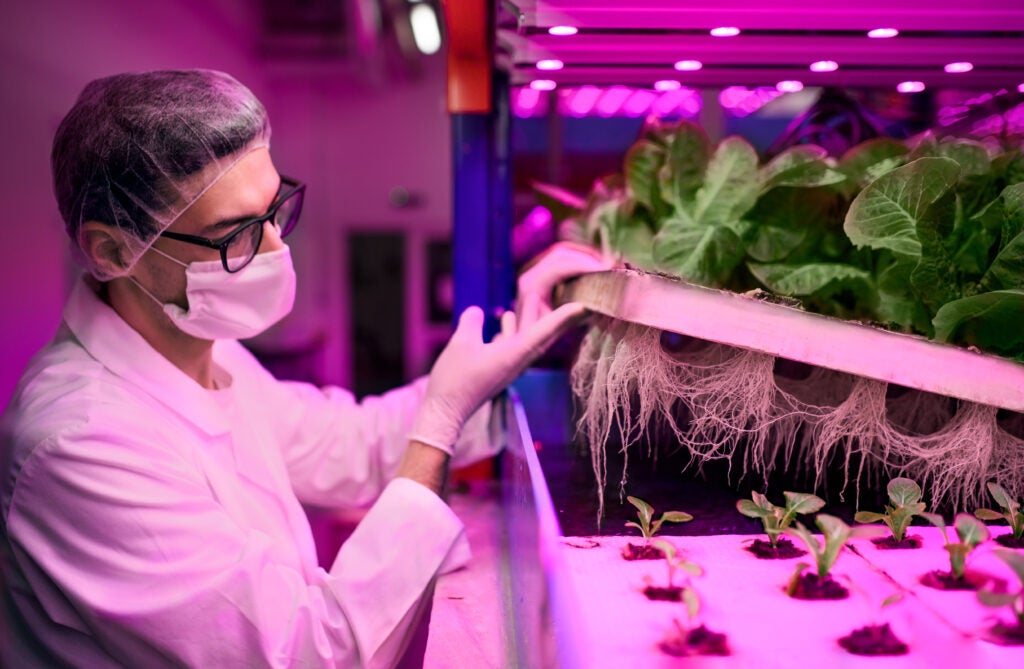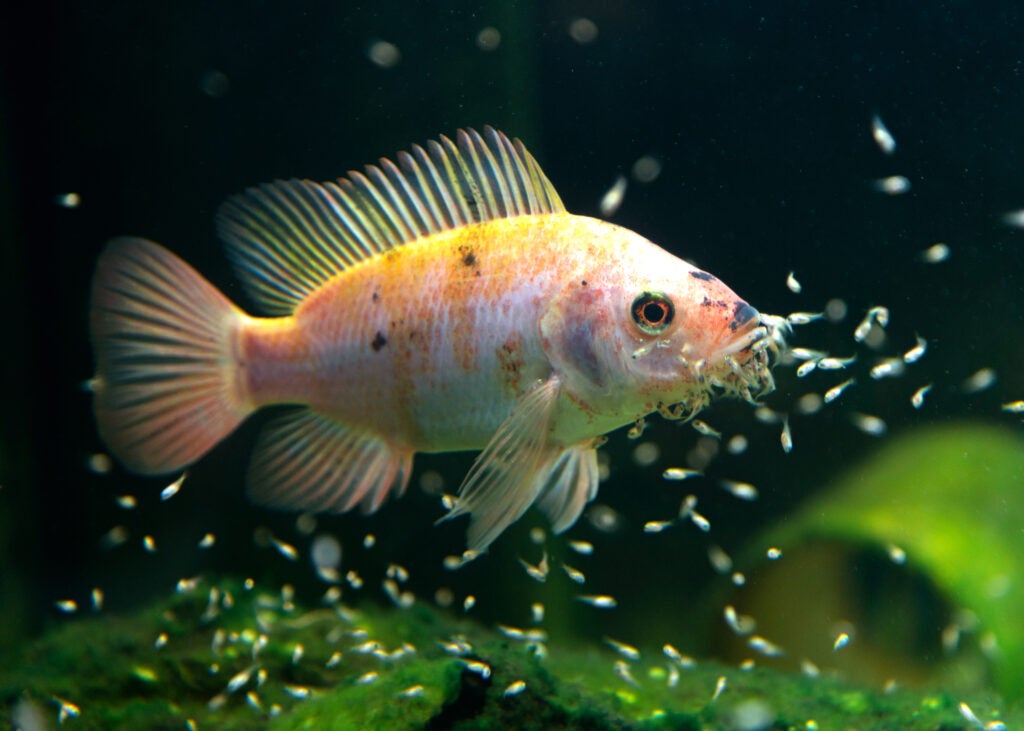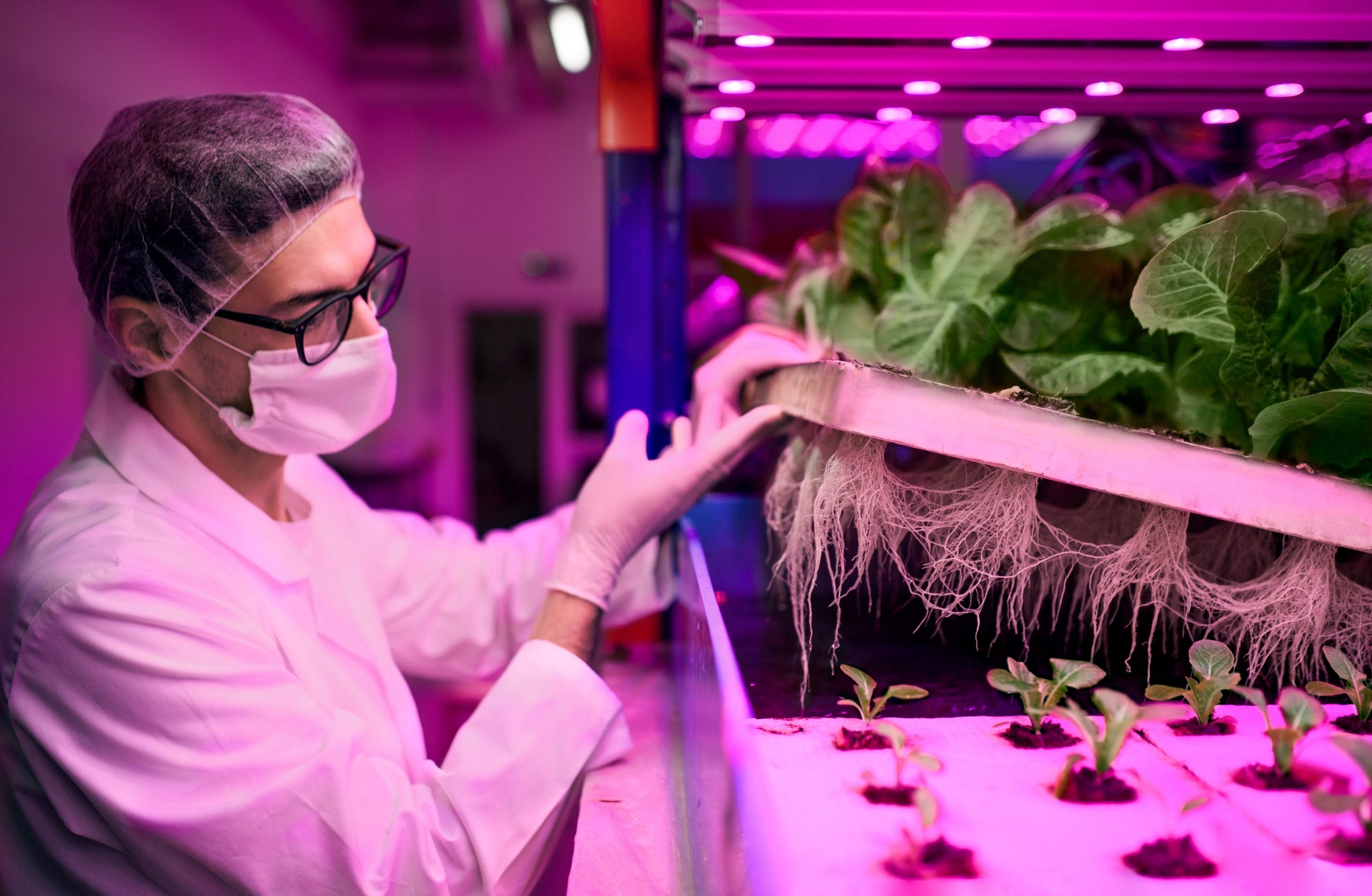Growing Up
Author: Rowlie Flores
Georgetown graduate student studies the feasibility of vertical farming in Brooklyn

Farming and New York City do not typically belong in the same sentence. Yet Andra Roventa, a Master’s student in Urban and Regional Planning in Georgetown’s School of Continuing Studies, made the case that farming – in this case, vertically – has a key role to play in reducing the city’s food insecurity.
Roventa explored the feasibility of this innovative cultivation technique during the third annual Student Research Summit of the Georgetown Global Cities Initiative (GGCI) on March 5, 2021, alongside fellow students’ research from public health to sustainable development.
The New York City native cited the metropolis’ population growth and food scarcity as motivating factors in pursuing her research. Brooklyn has many food deserts and food insecurity, she shared, “so it is a prime place to look into the feasibility of vertical farms.”
Vertical farming maximizes pre-existing space by growing different types of produce indoors. Vegetables or other plants grow on multiple trays, which are often stacked. The nutrition, lights, and temperature are closely controlled. Water is on a closed loop system and reused.
Brooklyn is a prime place to look into the feasibility of vertical farms.
Andra roventa
Roventa focused on the feasibility of aquaponics, where planting takes root in water, rather than soil, and fish or other aquatic animals both grow and provide key nutrients for the plants. Hydroponics and aeroponics are the other techniques, which differ in their bases—water or air—and nutrition sources.
Advantages abound. Planting conditions vary less than the outdoors, and technology allows close monitoring and adjustments. Efficiency per square foot is comparable to or higher than standard growing practices. Climate-related events are less of a threat to the produce, providing a forward-looking benefit. By reducing the land needed for lettuce and tomatoes, more land could be used for cattle production, crops that can only be grown outdoors, or natural preservation.
The yield can be impressive. Early vertical farms in Baltimore, Detroit, and New York demonstrate such outcomes.
Implementing vertical farms in cities, particularly New York City, is a difficult task, however. The capital to rent and renovate an existing space, such as abandoned warehouses, in Brooklyn is a major constraint. The up-front investment “tends to discourage smaller businesses that are interested in venturing into vertical farming,” Roventa said. Equipment is another obstacle. In a 36,000 square-foot warehouse in Brooklyn, the required equipment would equate to about $144 per square foot or $5.1 million in total. This constitutes the primary hurdle, in her view.
Vertical farming should not be seen as a sole solution, but rather a way to complement other methods of food generation. The limited crop type that you can grow using aquaponic technology is another challenge to the opportunity for vertical farming to make a dent in urban food deserts. “Some things are crucial to people’s diets like starches,” Roventa says. Potatoes, for example, typically grow better in traditional require outdoor farming because their rootsy requireneed large and deep spaces to build their roots into the soil, but aquaponics crops are limited to water-based plants like lettuce and tomatoes. While some fruits and vegetables may seem reasonable for vertical farming, these crops do not make up the entirety of a person’s nutritional needs.
While technically possible, could vertical farming be profitable in Brooklyn? The profit depends highly on the market price and time to maturity for the produce and fish, found Ms. Roventa in her quantitative analysis. Looking at the average costs and market prices for tilapia and lettuce in Brooklyn, she found that both crops could net $340,000 in profits, which would likely rise in subsequent years.

When Ms. Roventa input the lowest market prices for lettuce and tilapia, produce profits were not enough to make up equipment and labor costs. Longer growing crops also threaten profit. Unlike lettuce, which can be harvested at least twice a month, tilapia can take up to six months to grow, thus limiting the farm to two harvests per year.
Affordability can be improved and the industry made more attractive. According to Ms. Roventa, cities could shift priorities and regulations regarding indoor uses and zoning by working closely with businesses. A public-private partnership or a similar system offers promise. Governments at any level could also incentivize green technology innovation or adoption that could bring down production cost.
Vertical farms allow cities to reimagine where their food comes from and decide which produce can be grown indoors and outdoors. Together with conventional farming, it is a promising tool in the fight against food security in urban areas.

